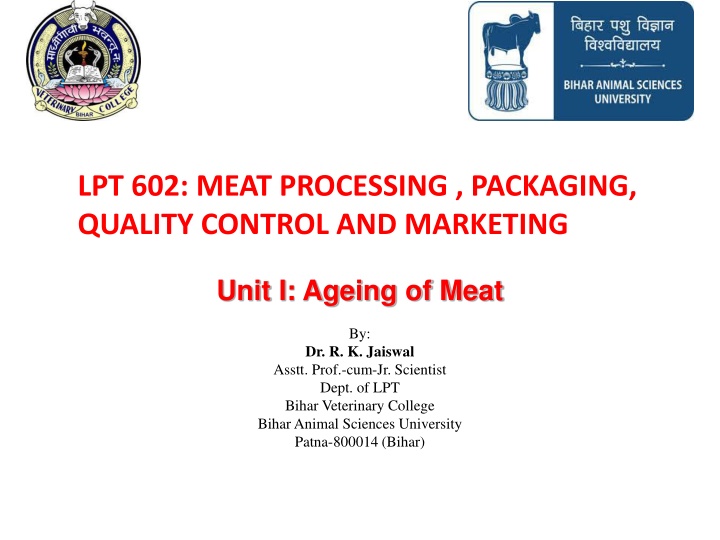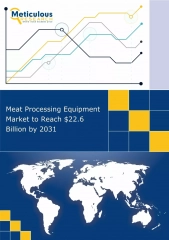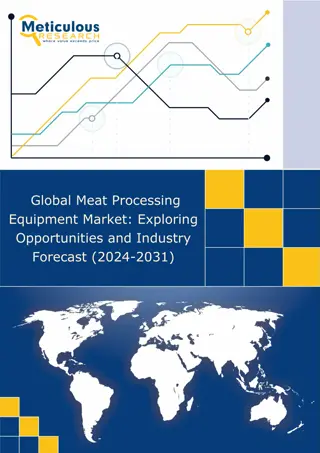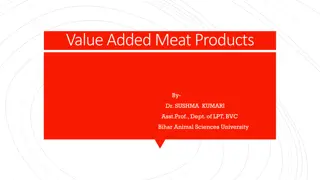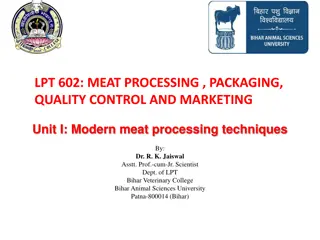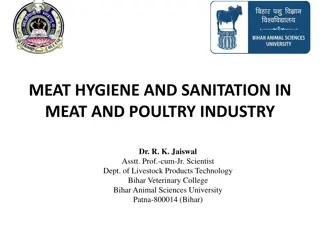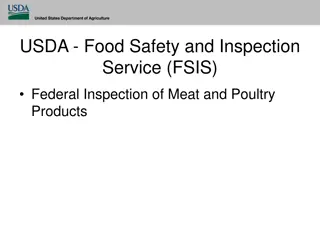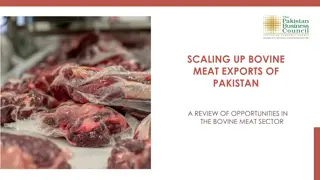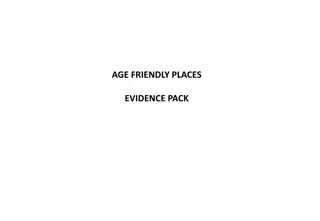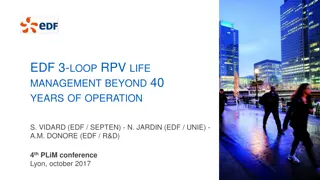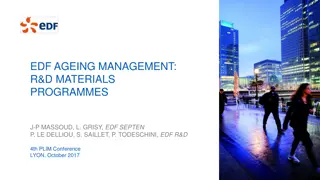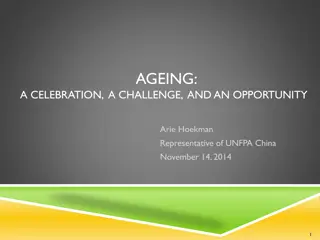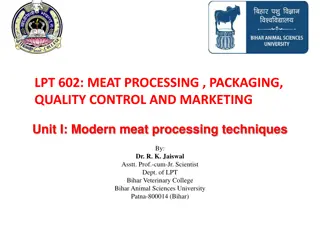The Ageing Process of Meat in Meat Processing
Ageing of meat is a crucial process in meat processing that involves holding unprocessed meat at specific temperatures to enhance tenderness and flavor. This process, also known as ripening or conditioning, triggers physical and chemical changes in protein structure, collagen, and proteolysis. Different types of ageing, such as dry and wet ageing, affect the quality of the meat by influencing factors like denaturation, enzyme activity, and muscle protein alterations. Understanding these changes is essential for maintaining meat quality and ensuring consumer satisfaction.
Download Presentation

Please find below an Image/Link to download the presentation.
The content on the website is provided AS IS for your information and personal use only. It may not be sold, licensed, or shared on other websites without obtaining consent from the author.If you encounter any issues during the download, it is possible that the publisher has removed the file from their server.
You are allowed to download the files provided on this website for personal or commercial use, subject to the condition that they are used lawfully. All files are the property of their respective owners.
The content on the website is provided AS IS for your information and personal use only. It may not be sold, licensed, or shared on other websites without obtaining consent from the author.
E N D
Presentation Transcript
LPT 602: MEAT PROCESSING , PACKAGING, QUALITY CONTROL AND MARKETING Unit I: Ageing of Meat By: Dr. R. K. Jaiswal Asstt. Prof.-cum-Jr. Scientist Dept. of LPT Bihar Veterinary College Bihar Animal Sciences University Patna-800014 (Bihar)
Ageing In absence of microbial spoilage, holding of unprocessed meat above the freezing point (-1.5 C). Also known as Ripening/Conditioning. Associated with increase in tenderness and flavour. Temperature: 0 C to 3 C Degenerative changes commence before ultimate pH reached. Continues till bacterial spoilage or gross denaturation and desiccation of the proteins, making meat inedible.
Types of Ageing Dry Ageing Wet ageing
Changes in meat system during ageing Protein Denaturation Physical or intra-molecular rearrangement of amino acids, not involve hydrolysis of the chemical bonds linking the constituent amino acids of the proteins polypeptide chain. Inclined if pH below than invivo, temp. above 25 or below 00C or non physiological salt concentration
Collagen and elastin don t denature during conditioning, collagen appear to swell. Detaches actin filaments from Z line. Z lines in white muscles are more labile than red. Extractability of myofibrillar protein is affected by ultimate pH of muscle (+), High temp (-). Loss of WHC is more universal (least at pH: 5.4-5.5)
Proteolysis Denatured protein are labile to attack by proteolytic enzymes. With the increase of tenderness there is an increase in the titer of free -glucuronidase, which can attack mucopolysachharide of ground substance or carbohydrate moieties in collagen itself. During conditioning invivo, muscle is capable of elaborating enzymes which breakdown connective tissue proteins in abnormal circumstances.
Significant changes in muscle proteins which might alter the tenderness of meat could occur without extensive proteolysis. Actomyosin formed during rigor mortis remains intact. Release of Ca++ ion initiate change in myofibrillar protein through water soluble enzymes viz. CASF and CDP/calpains
Calpains occur in two forms: 1. m-calpain concentrations of calcium ions (1 2 mM) 2. -calpain activated concentrations (50 100 M). Calpains degrade desmin, tropomyosin and M-line protein Calpains have no action on actin and myosin. Calpastatin is a specific inhibitor of calpain. CASF degrade the gap filaments, activated pH above 6 activated by high (millimolar) by low (micromolar)
Cathepsin (B,D,H &L) pH optima below 6. H can't degrade native myofibrillar protein, D can but below pH 5. But B & L can degrade the proteins L most important in conditioning, degrade troponins T, I and C protein rapidly and titin (connectin), nebulin, actinin, tropomyosin, actin and mysoin slowly (action at pH 5.5 faster than 6 but slower than at 5)
Other chemical changes ATP break down to Inosinic acid, inorganic phosphate and ammonia (and Inosinic acid- Phosphate, ribose and Hypoxanthine) Organoleptically optimum conditioning is happen when hypoxanthine level reaches to 1.5-2.0 moles/g, the flavor producing agent produced from inosinic acid.
Breakdown of fat and protein also contributes to flavour by producing H2S, NH3, acetaldehyde, acetone and diacetyle. Prolonged conditioning may cause loss off flavour (oxidative rancidity of fat) Carnosine and anserine are progressively hydrolyzed to alanine and histidine during prolonged conditioning and is undesirable (Maillard reaction)
